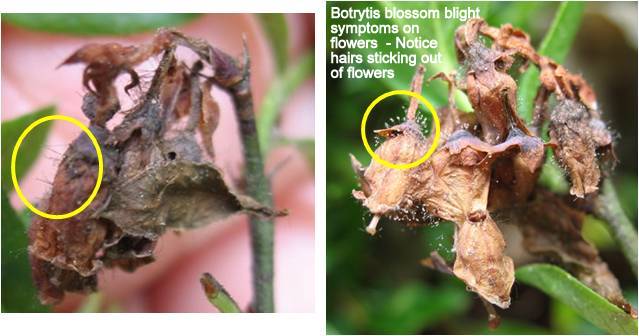5.23.13 Warning: Bees and Botrytis blight
You will want to minimize any exposure of honey bees, bumble bees and native pollinators to pesticides, including fungicides, during bloom. Bumble bees and native pollinators will still be working pollinating your fields when poor conditions keep the honey bees in their hives. The fungicides recommended for control of Botrytis blossom blight are considered non-toxic to honey bees but we do not know how native pollinators would react to these materials or how there may be subtle effects on honey bees and bumble bees.
My recommendation is not to apply fungicides to control Botrytis blossom blight unless you are sure you have it in your field. In my experience visiting many fields reported to have Botrytis blossom blight is that the dead blossoms have been due to Mummy berry disease in the majority of fields.
ONLY apply fungicides to control Botrytis blight if:
- you have seen severe infection this year in early clones, this means more than one or two blossoms affected, and
- you have had a severe problem with Botrytis blossom blight in previous years.
If you do apply fungicides during bloom, apply them at late evening or at night to minimize the exposure of pollinators to these compounds.

